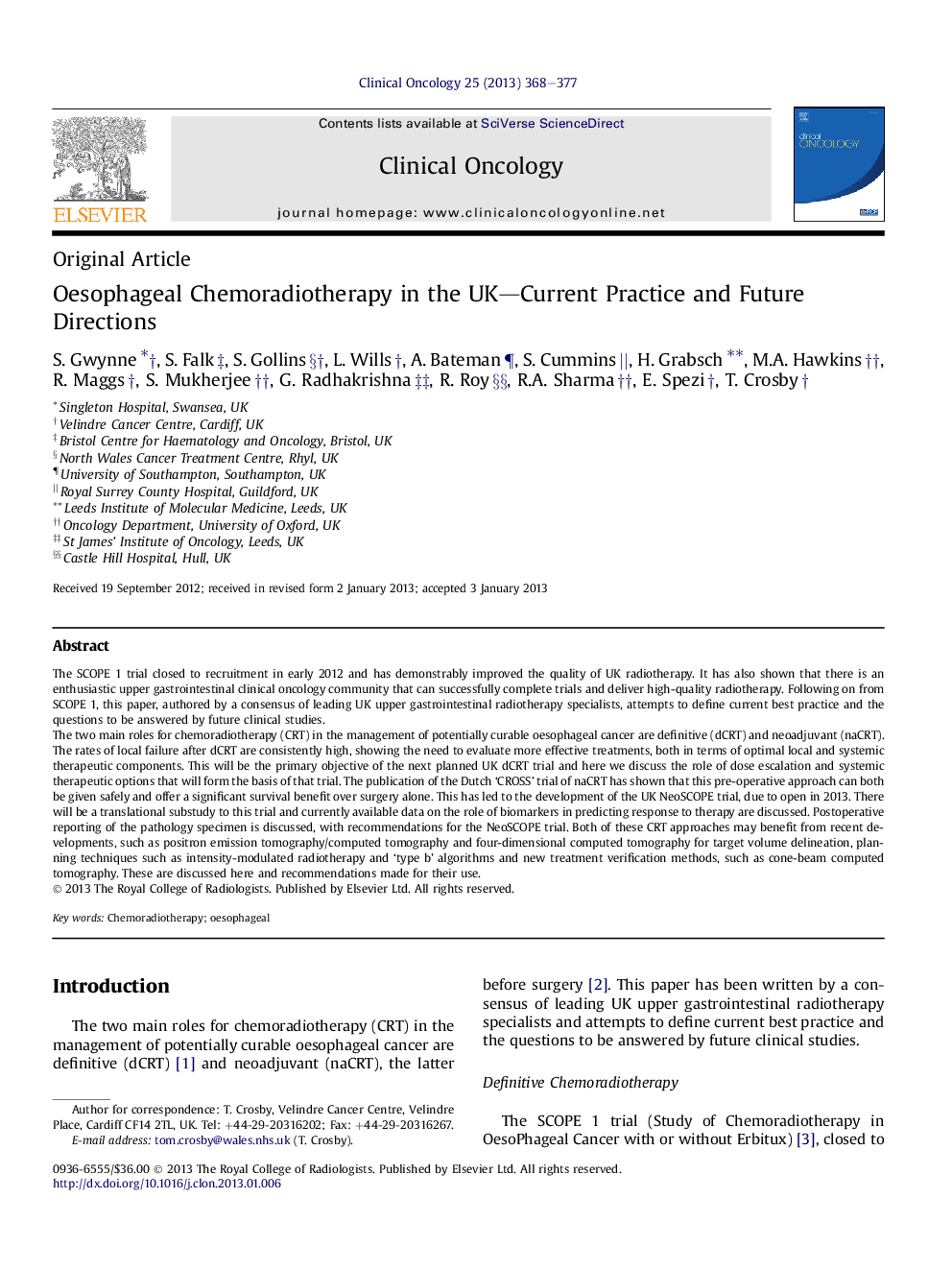| Article ID | Journal | Published Year | Pages | File Type |
|---|---|---|---|---|
| 5699389 | Clinical Oncology | 2013 | 10 Pages |
Abstract
The two main roles for chemoradiotherapy (CRT) in the management of potentially curable oesophageal cancer are definitive (dCRT) and neoadjuvant (naCRT). The rates of local failure after dCRT are consistently high, showing the need to evaluate more effective treatments, both in terms of optimal local and systemic therapeutic components. This will be the primary objective of the next planned UK dCRT trial and here we discuss the role of dose escalation and systemic therapeutic options that will form the basis of that trial. The publication of the Dutch 'CROSS' trial of naCRT has shown that this pre-operative approach can both be given safely and offer a significant survival benefit over surgery alone. This has led to the development of the UK NeoSCOPE trial, due to open in 2013. There will be a translational substudy to this trial and currently available data on the role of biomarkers in predicting response to therapy are discussed. Postoperative reporting of the pathology specimen is discussed, with recommendations for the NeoSCOPE trial. Both of these CRT approaches may benefit from recent developments, such as positron emission tomography/computed tomography and four-dimensional computed tomography for target volume delineation, planning techniques such as intensity-modulated radiotherapy and 'type b' algorithms and new treatment verification methods, such as cone-beam computed tomography. These are discussed here and recommendations made for their use.
Keywords
Related Topics
Health Sciences
Medicine and Dentistry
Oncology
Authors
S. Gwynne, S. Falk, S. Gollins, L. Wills, A. Bateman, S. Cummins, H. Grabsch, M.A. Hawkins, R. Maggs, S. Mukherjee, G. Radhakrishna, R. Roy, R.A. Sharma, E. Spezi, T. Crosby,
